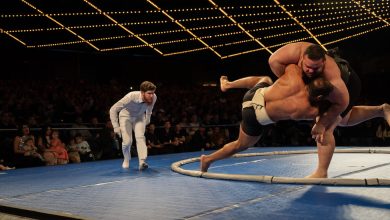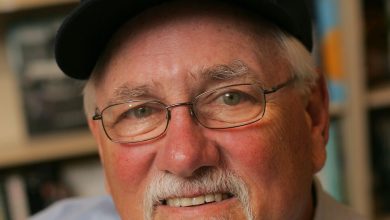How to Get Past ‘Did Not Finish’

Leah Ofsevit had long dreamed of running the Boston Marathon. A native of Newton, Mass., she had finished three other marathons before and had qualified for the 2018 installment of the Boston race, which she proudly calls her hometown marathon.
But when race day rolled around, the weather hardly cooperated.
The temperature on that April morning was around 40 degrees as runners battled pouring rain and hail. Marathon officials would later call the conditions some of the worst in the history of the race. The number of runners who dropped out in 2018 was up about 50 percent from the 2017 race.
Ofsevit was freezing. She couldn’t feel her fingers and had stabbing pain in her knees with every step. She climbed Heartbreak Hill but could not go much farther, and hobbled to a water tent at Mile 21 where a friend was volunteering. She fell sobbing into her arms.
Her day was done.
“It gutted me,” Ofsevit said. “It was awful to drop out at that point. It’s not just the marathon — it’s the training that leads up to it, months and months and months. It was horrible.”
In every marathon a certain number of entrants end up with a final result listed as Did Not Finish, or D.N.F.
This year’s recent races have been no different. In the Boston Marathon, held on Oct. 11, 263 people did not finish out of the 15,734 who ran. The New York City Marathon had 25,390 entrants on Nov. 7, and 380 failed to finish.
The Hartford Marathon typically has around 1.5 percent of entrants not finish, and the marathon in Rehoboth Beach, Del., has a rate of about 4 percent.
Jim Purvis, a coach for the Brooklyn running club BK Run Project, said that heat — leading to dehydration and heat exhaustion — is the most common cause. “The heat just gets to runners,” he said. “On hot days, you’re just working harder than you can cool yourself down.”
That was the case for Steve Bender, a Pennsylvania athlete who runs marathons in a firefighter’s outfit, albeit with running sneakers, on behalf of his Firefighter Five Foundation. When the temperature crept past 90 for the Morgantown Marathon in West Virginia in October 2019, he stopped just after the halfway point. “I was starting to see things, starting to get nauseous,” he said. “It was getting hotter and hotter.”
Entrants may also find themselves in trouble if they cut corners in their training plans. Training programs for marathons are intense, typically lasting 18 weeks and reaching 25 to 30 miles a week on average. “Coaches like to say the hardest part of a marathon is getting to the starting line healthy,” said Chris Forti, a coach of the Dashing Whippets running team in New York. “If you’re able to pull that off, more often than not you’re OK.”
Marathon veterans say it’s the seasoned distance runners, paradoxically, who are more likely to quit. First-timers will do everything it takes to reach the finish line. Elite runners may realize they’re having an off day and decide it’s not worth slogging for 26.2 miles. “If they’re not going to win a race or place, they may stop and that’s it,” said Kathleen Titus, the race director of the Philadelphia Marathon. “They’ll save their legs for another race they can compete in and win prize money.”
For Jonelle Drugan, who ran the Marine Corps Marathon in 2017 two weeks after running the Chicago Marathon, it was too many marathons in too little time.“It was a superhot day for both races, and Chicago took a lot more out of me than I expected,” she said. “I just didn’t have it.”
Whatever the reason for the D.N.F., those who fail to finish say the experience is nothing short of heartbreaking. Many runners describe the same experience after making the decision to stop: sitting on the curb with their head in their hands, tears streaming down their face, before figuring out a way home.
“The first thing that comes through your mind is all the time you spent training,” said Maria Luisa Cesca, who once sustained a hamstring injury during the Jacksonville Marathon. “You were doing so well, so many mornings with 4:30 a.m. runs before the kids get up.”
Runners who spoke about their D.N.F. said it was important for them to try another marathon. The payoff is that much more meaningful, they said, after previously coming up short.
That is perhaps especially true for a group of marathoners including Jasmine Hietpas, who ran the Boston Marathon in 2013 and found herself in a pack of runners stuck in place just past Mile 25. “Thousands of runners, and no one knew the gravity of the situation,” she said. Soon they would learn of the events at the finish line, where two bombings killed three people and wounded more than 260.
Hietpas sent an email to friends and family after her marathon was cut short, calling it “the most devastating experience of my life. I wanted to cry but I was blank with emotion, in complete disbelief about what was happening.”
There was no question she would come back to Boston in 2014. “It was emotional, absolutely,” Hietpas said. She went on to finish the Boston Marathon and marathons in Chicago, Berlin, Tokyo, New York and London.
Though her circumstances were very different, Ofsevit knew she would return to Boston, too, determined to right her record. She entered the 2019 Boston Marathon a year after she clocked a D.N.F.
Nearing the finish line, she put the previous year’s shortcomings behind her for good. “I never had as much fun as when I was running in 2019,” she said. “It was a beautiful day, I high-fived every kid, I saw friends at every mile. I don’t think I stopped smiling the entire time.”




